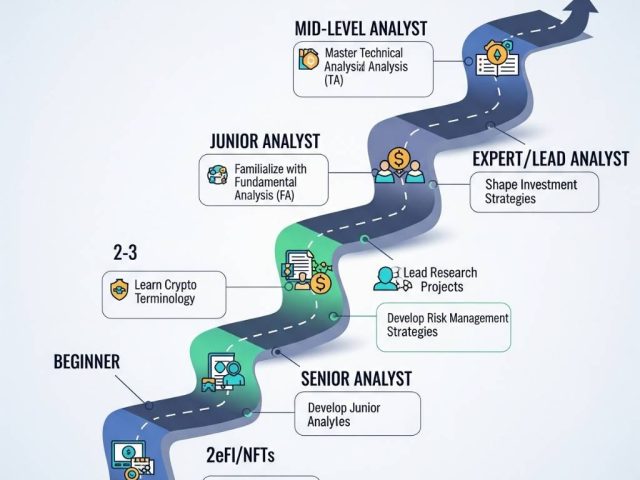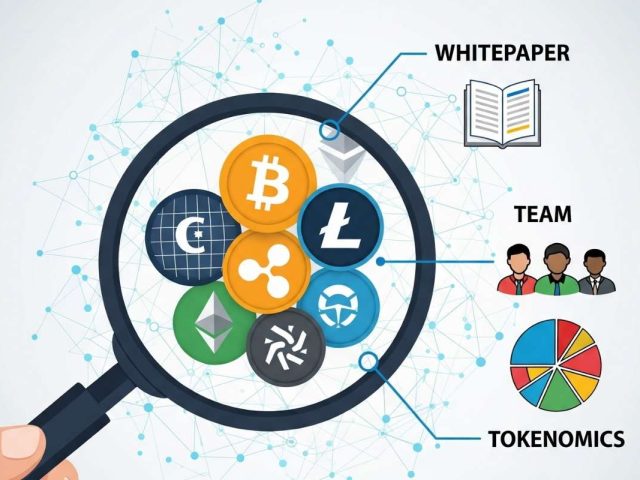Introduction: Bridging the Gap in the Cryptosphere
Imagine a world where you can harness the revolutionary potential of cryptocurrency without the constant white-knuckle ride of price fluctuations. That’s the promise of stablecoins—digital assets pegged to a stable reserve, typically a fiat currency like the US dollar.
In the dynamic and often volatile cryptosphere, stablecoins act as a safe harbour, allowing investors to park their funds without fearing an overnight plunge. But with Tether, the undisputed king of stablecoins, facing ongoing scrutiny, what does the future hold for these innovative financial instruments? Let’s dive deep and explore the role and impact of stablecoins in 2024, with a particular focus on Tether’s enduring presence.
Tether: The Unrelenting Giant
Tether (USDT) stands as a titan in the stablecoin landscape. According to CoinMarketCap data (as of March 29, 2024), Tether boasts a market capitalization exceeding $100 billion, dwarfing its closest competitors. This dominance translates to significant influence; Tether’s actions can ripple throughout the entire cryptocurrency market.
But Tether’s story isn’t solely defined by its size. Launched in 2014, it was one of the first movers in the stablecoin space, establishing itself as a go-to option for crypto enthusiasts seeking stability.
Unveiling Tether’s Mechanism: Pegged to Reality?
However, Tether’s mechanism for maintaining its peg to the US dollar has been a subject of much debate. Unlike some stablecoins backed by a one-to-one reserve of fiat currency, Tether’s backing mechanism has historically been less transparent. While Tether claims its reserves consist of a combination of cash equivalents and other assets, the exact composition remains somewhat opaque.
This lack of transparency has fueled concerns about Tether’s true stability. Critics argue that if Tether doesn’t have sufficient reserves to back its tokens, a sudden loss of confidence could trigger a death spiral—a scenario where a mass sell-off devalues the token further, ultimately leading to its collapse.
Whether these fears are justified remains to be seen. Tether has recently taken steps to address transparency concerns, announcing plans to publish real-time reserve data in 2024. This move could be a significant step towards restoring trust in the world’s leading stablecoin.
The Impact of Tether: Boon or Bane?
Tether’s influence extends far beyond its market cap. Here, we delve into the positive and negative impacts of Tether on the cryptocurrency market.
Tether’s Positive Influence: Facilitating Crypto Transactions
One of Tether’s most significant contributions has been its role in facilitating crypto transactions. By offering a stable alternative to volatile cryptocurrencies like Bitcoin, Tether has increased liquidity within the crypto ecosystem. This improved liquidity makes it easier for investors to buy and sell other cryptocurrencies without having to convert back and forth to fiat currency.
Imagine you want to purchase an NFT (non-fungible token) but the price is listed in Ethereum (ETH). Converting your fiat currency to ETH and then back again after the purchase could incur exchange fees and expose you to price fluctuations. With Tether, you can hold a stable asset and easily convert it to other cryptocurrencies when needed, streamlining the entire transaction process.
The Flip Side: Concerns Regarding Market Manipulation
However, Tether’s dominance also raises concerns about potential manipulation. Some critics allege that Tether’s issuance of new tokens might have fueled past bull runs in the cryptocurrency market. The theory goes that by printing more USDT and injecting them into the market, Tether could artificially inflate the price of Bitcoin and other cryptocurrencies.
A Case Study: Did Tether Fuel Past Bull Runs?
While the evidence remains inconclusive, a closer look at historical data reveals some interesting correlations. For instance, periods of significant USDT issuance often coincided with surges in Bitcoin prices. However, it’s important to note that correlation doesn’t necessarily imply causation. Other factors, such as increased investor interest or positive developments within the blockchain industry, could have also contributed to these price movements.
The debate surrounding Tether’s potential for manipulation highlights the need for stricter regulations within the stablecoin landscape. We’ll explore the evolving regulatory environment in the next section.
Beyond Tether: A Look at the Evolving Stablecoin Landscape
Tether, while undeniably a significant force, isn’t the only player in the stablecoin game. As the technology matures and the potential of stablecoins becomes increasingly evident, we’re witnessing a diversification of the market. Here, we explore two key trends shaping the future of stablecoins:
Rise of Algorithmic Stablecoins: A Different Approach
Unlike Tether, which relies on a reserve of assets to maintain its peg, algorithmic stablecoins employ a different mechanism. These innovative stablecoins utilise smart contracts and economic incentives to automatically adjust their supply and demand, ensuring the price stays tethered to the target asset.
Imagine a seesaw where one side represents the stablecoin supply and the other represents its demand. When demand for the stablecoin rises (pushing the price up), the smart contract automatically mints new tokens, effectively increasing supply and bringing the price back down. Conversely, if demand dips (pulling the price down), the smart contract burns existing tokens, decreasing supply and restoring the peg.
While algorithmic stablecoins offer an intriguing alternative to reserve-backed models, they haven’t been without their challenges. Some algorithmic stablecoins have experienced de-pegging events, where the price deviated significantly from the target asset. These incidents highlight the importance of robust design and stress testing for algorithmic stablecoins.
The Potential of Central Bank Digital Currencies (CBDCs)
Another exciting development in the stablecoin space is the emergence of Central Bank Digital Currencies (CBDCs). The central bank issues and backs CBDCs, which are essentially digital versions of a nation’s fiat currency. While still in their early stages of development, CBDCs have the potential to revolutionise the financial landscape.
Think of a CBDC as a programmable dollar or euro. Central banks could potentially embed features within CBDCs, such as targeted stimulus packages or automatic tax deductions. However, CBDCs also raise concerns about privacy and central bank control over the money supply.
The interplay between Tether, algorithmic stablecoins, and CBDCs will undoubtedly shape the future of stablecoins. As we move forward, a balance needs to be struck between innovation, stability, and regulatory oversight.
The Road Ahead: Regulation and the Future of Stablecoins
The ever-evolving world of stablecoins demands a robust regulatory framework to ensure stability and consumer protection. Currently, the regulatory landscape surrounding stablecoins remains somewhat fragmented. Some countries have implemented specific regulations for stablecoins, while others are still grappling with how to best approach this new asset class.
The Regulatory Landscape: Are Stablecoins Here to Stay?
In the United States, for instance, regulatory bodies like the Securities and Exchange Commission (SEC) are actively exploring how to classify and regulate stablecoins. The outcome of these deliberations will significantly impact the future of stablecoins in the US market.
A well-defined regulatory framework could foster innovation within the stablecoin space while mitigating potential risks. Clear regulations would provide much-needed clarity for both issuers and investors, ultimately promoting greater adoption and trust in stablecoins.
What Does the Future Hold for Tether and Stablecoins in General?
Looking ahead, Tether’s future hinges on its ability to address transparency concerns and potentially adapt its model in response to evolving regulations. If Tether can enhance its transparency and maintain its dominant position, it will likely continue to play a major role in the stablecoin market.
However, the rise of alternative models like algorithmic stablecoins and CBDCs suggests a future with a more diverse stablecoin landscape. The “best” stablecoin model might ultimately depend on specific use cases and regulatory environments.
One thing seems certain: stablecoins are here to stay. As the technology matures and regulations are implemented, stablecoins have the potential to become a crucial bridge between the traditional financial system and the dynamic world of cryptocurrencies.
Conclusion: Embracing Stability in a Dynamic Market
The cryptocurrency market, with its boundless potential and inherent volatility, can feel like a rollercoaster ride. Stablecoins offer a much-needed element of stability, allowing investors to navigate the crypto landscape with a degree of peace of mind.
Tether, despite its controversies, has undeniably played a pivotal role in fostering the growth of the crypto ecosystem. As the market matures, Tether will need to adapt and evolve to maintain its dominance. Transparency and, potentially, a hybrid reserve model could be key factors in its future success.
Looking beyond Tether, the future of stablecoins is brimming with possibilities. Algorithmic stablecoins offer an innovative approach to maintaining a peg, while CBDCs hold the potential to revolutionise the financial landscape altogether.
The road ahead for stablecoins is likely to be paved with continued innovation and regulatory developments. One thing is clear: stablecoins have the potential to become a cornerstone of the future financial system, offering a blend of stability, accessibility, and the revolutionary potential of blockchain technology.
As the legendary investor Warren Buffett once said, “Risk comes from not knowing what you’re doing.” By embracing stablecoins with a clear understanding of their benefits and limitations, investors can participate in the exciting world of cryptocurrencies with a greater sense of security and confidence.
Ready to delve deeper into the world of stablecoins? Check our Reports Here
FAQs
Here are some frequently asked questions about stablecoins:
- What are the risks associated with using Tether?
While Tether offers stability compared to other cryptocurrencies, it’s not without risks. Concerns surround the transparency of its reserve backing and the potential for manipulation. Additionally, Tether, like any other cryptocurrency, remains susceptible to hacking and other security threats.
- Are there alternatives to Tether?
Yes, there are several alternative stablecoins available, such as USD Coin (USDC), Binance USD (BUSD), and Dai (DAI). Each stablecoin utilises a different mechanism to maintain its peg, so it’s important to research each option carefully before investing.
- How can I stay informed about the latest developments in stablecoins?
Stay updated by following reputable crypto news websites and publications. Additionally, joining online communities and forums focused on stablecoins can be a valuable source of information and insights.
- Will stablecoins ever replace traditional fiat currencies?
While stablecoins offer certain advantages, it’s unlikely they will completely replace traditional fiat currencies in the foreseeable future. However, stablecoins have the potential to become a widely accepted form of digital payment, particularly for cross-border transactions.
- What role will stablecoins play in the future of the global financial system?
Stablecoins have the potential to streamline financial transactions, increase accessibility to financial services, and potentially foster greater financial inclusion. As the technology matures and regulations are implemented, stablecoins could become a key component of a more efficient and innovative global financial system.





